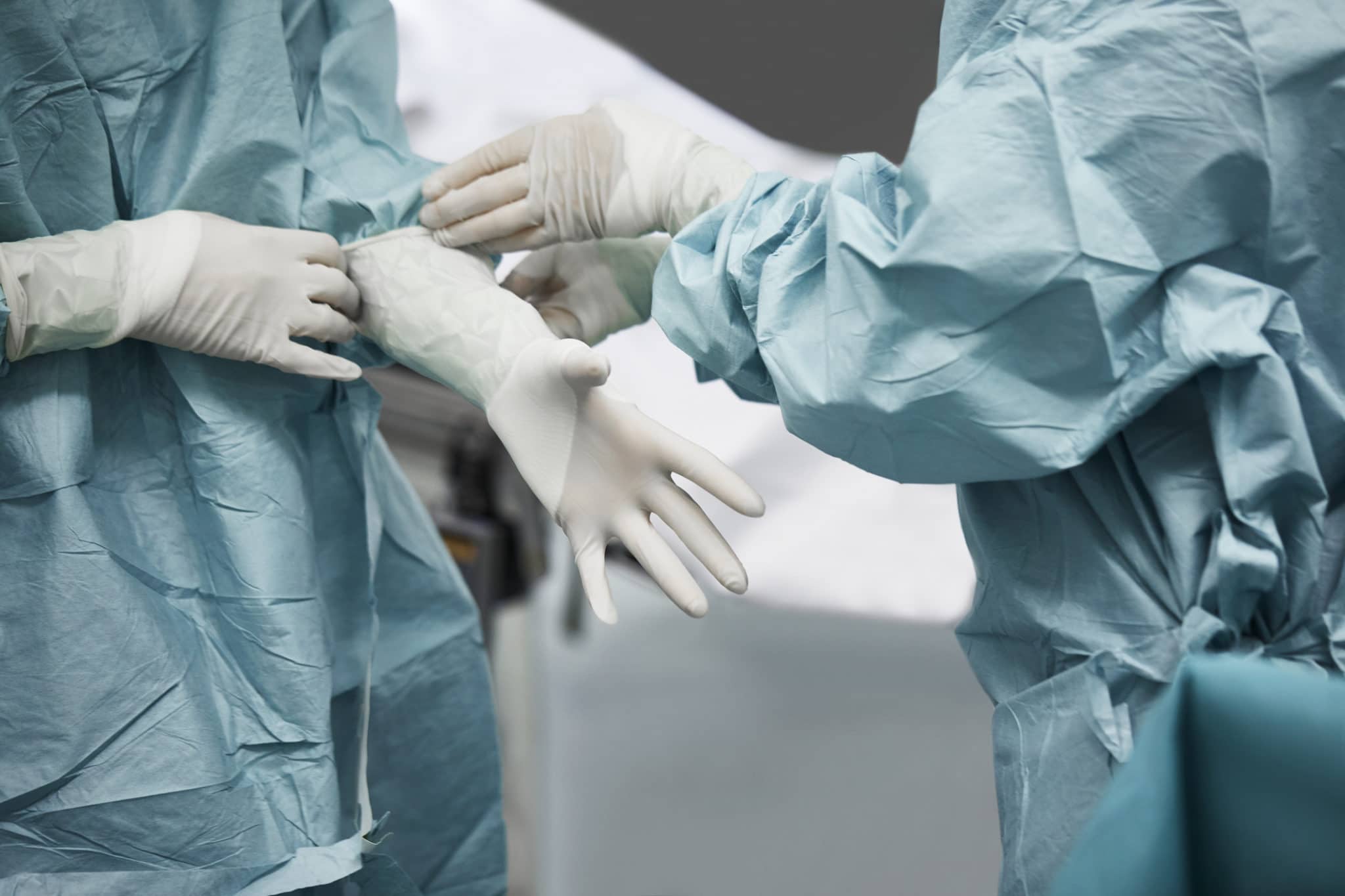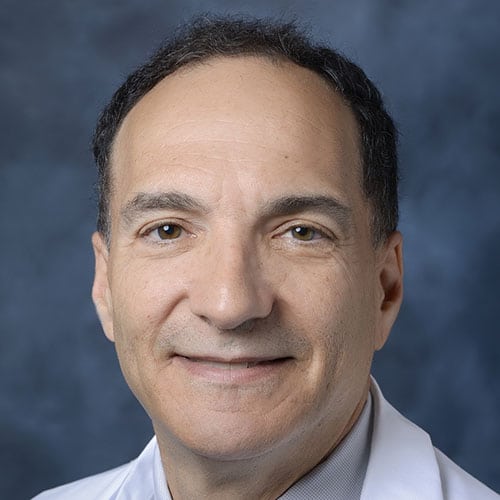 doctors helping one another into surgical gloves. Photo by Getty Images
doctors helping one another into surgical gloves. Photo by Getty Images As a medical doctor in Los Angeles, I’ve learned something about change during the past five months. Not just that kind of change. Spare change. The kind you toss on the dresser at the end of a day. On the back of the quarter dollar, just above the eagle, resides the national motto: E Pluribus Unum (“From many, one”). As the motto implies, we are stronger and more resilient, and we discover our best selves when we face challenges collectively — particularly the countless challenges COVID-19 poses.
On March 16, with the pandemic closing in on the city, my medical group began cancelling routine office visits to protect patients and providers. By March 23, our six offices had telescoped down to one. Instead of our usual 800 patients per day, we were seeing 20. Patients with emergent medical problems were sent to emergency rooms, which struggled to separate COVID patients from others and to find the personal protective equipment (PPE) to keep staff, providers and patients safe. The ability to provide care seemed to be dissolving into chaos.
The leadership of our Primary Care program and the leadership team confronted an almost impossible set of challenges: keep us connected to our patients, support them with routine care, and develop capabilities to address the unexpected health issues that can affect anyone at any time.
Over the course of a single week, with the participation of doctors, nurses, pharmacists and administrators, the outlines of a completely new system emerged. Doctors were divided into three teams. Most provided exclusively “virtual visits” on telephone or video from home. A number of bolder or healthier doctors went to urgent care to don “space suits” and help with COVID-19 patients and others. A handful stayed at the office to care for patients with non-COVID-19 illnesses.
A key tool in the new system was the video visit. The system’s experimentation with video visits over the years generated endless discussion about their appropriateness for various medical problems, the technological barriers, and the requirements for documentation and billing. Suddenly, in the face of emergency, the barriers evaporated. The main question was how 60 primary care doctors — many “technologically challenged” — could master electronics and connect with our patients.
Over the course of a single week … the outlines of a completely new system emerged.
To address video visits and other COVID-19 challenges, the group rolled out the “primary care huddle.” Each morning, the teleconference huddle brought together all our primary care doctors from homes across the city. The problems of connecting from a tablet or cellphone were overcome. Key information about COVID-19 from our medical center epidemiologists and other sources was quickly disseminated. A central scheduling arrangement was created for video visits and for telephone visits when video was not an option. As the flow of paperwork to the abandoned offices continued unabated, a rotation was arranged for a single doctor at a nearly vacant office to handle the paperwork for all.
As South Korea had experienced COVID-19 earlier than the U.S., we arranged a teleconference call with Korean medical administrators to learn from their experiences. The Korean protocol screened patients, staff and providers for COVID-19 on arrival at the clinic, and used masks and social distancing. The clinics experienced no cases of transmission while using this protocol. Using the Korean model, our office visits began to ramp up. Taking care of those with acute non-COVID-19 medical problems offered a welcome glimmer of normality. As most of the doctors remained at home, those of us in the office acted as a pool, seeing one another’s patients and communicating with the patient’s primary care doctor.
Our doctors, nurses and pharmacists successfully restructured health care so effectively because we looked first to the needs of patients and colleagues rather than our own. From many, we were one.
As our offices progress toward a busy “new normal” that melds our innovations with standard practices, we cannot lose touch with the formula that served the patients and saved the system. It provided a rare “win” over the ravages of this capricious virus. It also offers us hope at a time when little else does. E Pluribus Unum. It’s not just a “quarter measure.” It has the power to save lives.
Daniel Stone is a medical doctor practicing in Southern California.






















 More news and opinions than at a Shabbat dinner, right in your inbox.
More news and opinions than at a Shabbat dinner, right in your inbox.